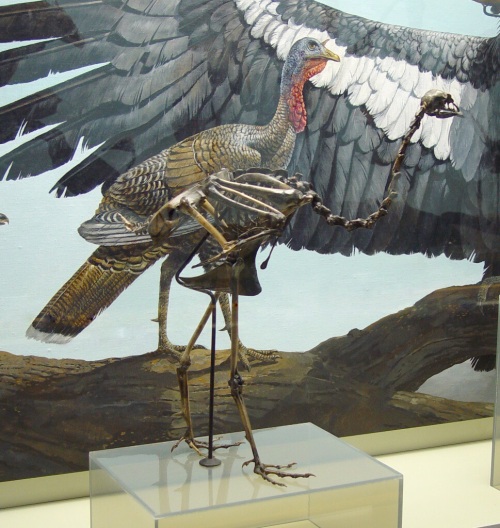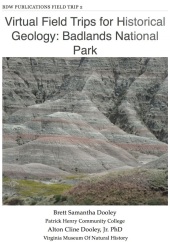
It’s the day after Thanksgiving in the US, so for today’s Fossil Friday we have a probable turkey bone from south of Diamond Valley Lake.
I found this bone by accident last week while looking for good examples of packrat teeth. While this fragment isn’t much to look at, we have almost no other fossil turkeys in the WSC collection.
This fragment is part of the distal end of the tarsometatarsus. This is a structure unique to birds and certain other dinosaurs, in which the ankle bones (the tarsals) and the foot bones (the metatarsals) are fused into a single unit. The proximal end articulates with the shin bone (tibiotarsus in birds), while the distal end has structures called trochlea that articulate with the toes. Most birds have three toes, and so have three trochlea at the end of the tarsometatarsus, as can be seen in the examples from modern turkeys shown below (from Thornton et al. 2012):
The WSC fragment is one of the trochlea, I think for either the second or third digit (the inside or middle toe). I’ll need to compare it to a modern turkey bone to confirm which one, and unfortunately the turkeys you buy at the grocery store don’t typically include the tarsometatarsus!
Judging by their near-absence in our collection, it would seem that turkeys were relatively rare in the valley during the Pleistocene. This is a little surprising since vast numbers of turkey bones have been recovered from Rancho la Brea, which is only about 80 miles away from Hemet (more than 11,000 turkey bones have been found there, according to Bocheński and Campbell, 2006). The Rancho la Brea turkey was long considered to be its own genus, Parapava, but was reassigned to the same genus as the extant turkey as Meleagris californica by Steadman (1980). (Below is a reconstructed skeleton of M. californica on display at the George C. Page Museum.)
It’s possible that turkeys may have breeding at Rancho la Brea, and there are reasons to think that they may have been particularly susceptible to being trapped in tar (Bocheński and Campbell, 2006). It’s also not clear that the turkey in the WSC collection is M. californica; it could be the modern wild turkey M. gallopavo or some other species. Even so, it’s remarkable that turkeys were seemingly quite rare such a short distance away from Rancho la Brea, and may have interesting implications for different environmental conditions across California during the Pleistocene.
References:
Bocheński, Z. M. and K. E. Campbell, Jr., 2006. The extinct California turkey, Meleagris californica, from Rancho la Brea: Comparative osteology and systematics. Contributions in Science, Natural History Museum of Los Angeles County, No. 509:1-92.
Steadman, D. W., 1980. A review of the osteology and paleontology of turkeys (Aves: Meleagridinae). Contributions in Science, Natural History Museum of Los Angeles County, No. 330:131-207.
Thornton, E. K., K. F. Emery, D. W. Steadman, C. Speller, R. Matheny, and D. Yang, 2012. Earliest Mexican Turkeys (Meleagris gallopavo) in the Maya Region: Implications for Pre-Hispanic Animal Trade and the Timing of Turkey Domestication. PLoS ONE 7(8): e42630. doi:10.1371/journal.pone.0042630




